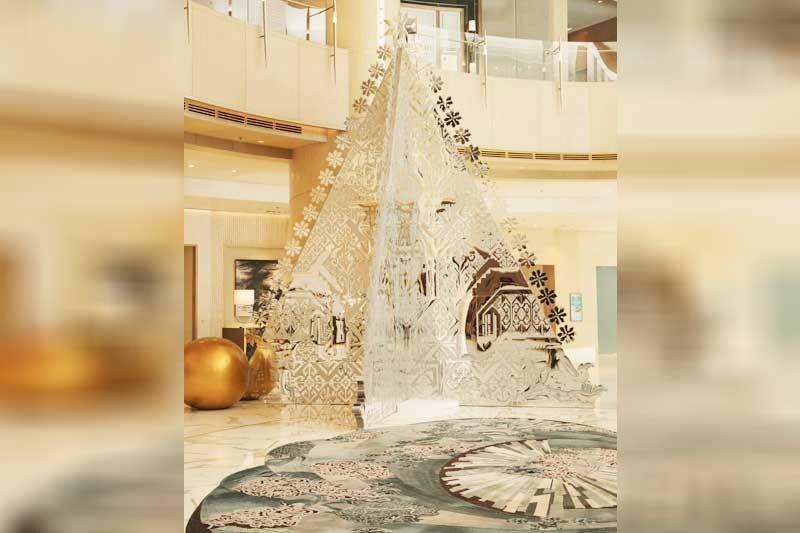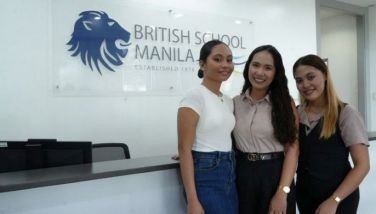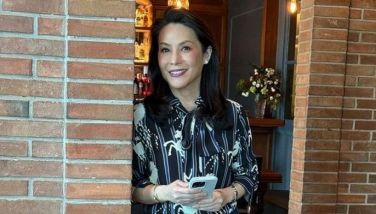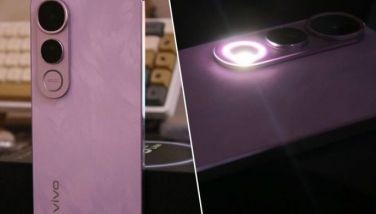Mirror’s Edge

Artist Ryan Villamael builds a 22-foot silver christmas tree for Shangri-La at The Fort
MANILA, Philippines — This Christmas, artist Ryan Villamael wants to inspire you to be present. With the debut of his most recent installation, a 22-foot silver Christmas tree at the lobby of Shangri-La at the Fort, Manila, Villamael manipulates metal and mirror to shape one of his most ambitious — and largest-scale — projects yet: “The Inclusive Tree.”
Brought onto the project by the hotel’s art consultant Bea Valdes, the tree project was the fruit of a short few months of collaboration. From the outside looking in, Bea’s discipline as an internationally-hailed accessories designer and artist shares many parallels with Ryan’s rigor and signature technique when it comes to his award-winning soft sculptures. In each other’s work, there are similarities in the purity of their respective processes — of the many hours of work it takes for each finished piece, the discipline of development, the detail (nothing too minute) and in the way most endeavors are a sum of their well-executed parts. Judging by surface conversations and the arresting beauty of “The Inclusive Tree” as the result of their partnership, it feels like an artistic match made in heaven.
“Inclusivity is a beautiful concept that only matches the holiday’s essence but also helps us appreciate our own culture and heritage,” writes the artist in a press release, referencing the almost three-story mirror tree that honors and references motifs taken from different aspects of Filipino culture — from the lattice of decorative cut work, to the traditional weaves of T’Nalak, Inabel and banig, “I was inspired to incorporate all of these into a singular tree that embraces our traditions, but presenting them in a modern context.”
Leaning away from the usual schmaltz of holiday nostalgia, Ryan’s creation looms over the grand hotel lobby at Shangri-La at the Fort as a silver-gilt mirror — allowing guests and its viewers to interact with the piece, to be “present” within the artwork themselves. “The art work reflects who we are,” shares Bea, “and it gives us a sense of our Christmas culture.”
On the genesis of this project and their organic coming together as friends and artists, YStyle sat down with the duo for a short Q&A.
YSTYLE: Can you walk us through the start of the tree concept? What was the basic idea in the beginning?
BEA VALDES: I think what we wanted to do, since the beginning, was the idea of a Filipino Christmas. It had a lot to do with using native flora and fauna, modern interpretations of the parol, and things like this — but for the tree, it didn’t even necessarily need to be a tree. It just had to be something that pulled things together but still spoke our language.
RYAN VILLAMAEL: It was an open concept since the beginning.
Bea, can you tell us briefly how your role at Shangri-La at the Fort, Manila, has evolved?
BEA: It sort of evolved slowly. It started from a relationship that grew from one area to the next. The group has really generous partners to work with in terms of the freedom you have to create. And for me, the best thing about it is the fact that I can work with more artists and designers. It’s not just about, I suppose, the way I see things but it becomes a partnership. Having different perspectives is really the way forward.

“The Inclusive Tree” will be on display only until Jan. 2 at the lobby of Shangri-La at the Fort, Manila.
And for you, Ryan, can you walk us through your process in being chosen for the project?
RYAN: This time last year, I said to myself I wanted to do a project with someone I respect, someone I look up to, or someone who shares the same process with me—
BEA: Be careful what you wish for… (Laughs)
RYAN: Yeah. (Laughs) That’s true. Because, you know, I usually work in isolation, most of the time just by myself, and I thought it would be interesting if I could find the opportunity to work with other like-minded people, you know, people with similar practices, people who are very consistent with what they do, and I guess I was lucky enough that it resulted in this.
Speaking about similar processes, Bea in your work you always speak about the idea of bayanihan or the amount of hands a piece goes through to reach completion — how many hands would you say were involved in this tree project?
RYAN: I would say 30.
BEA: Definitely more pa. Fifty?
RYAN: The idea is fantastic to me only because, you know, I always tell Bea that usually talaga I’m alone when I work on a project. I work in small scale, ako lang talaga usually mag-isa sa studio but doing this project, it was (laughs) very uncomfortable in the beginning because I didn’t know how to let go. I didn’t know how to trust people.
BEA: Let go and lead.
RYAN: Fascinating ‘din siya and how it worked out in the end it. I’ve never imagined myself doing something on this scale. It’s really big, for me.
That’s an interesting part of your process — always needing to work in isolation. How did you manage it for an installation as big as this?
RYAN: Actually, it started for me when I did some of my bigger installations like the one in Singapore Biennale because somehow, it ended up being a traveling installation, and I had to involve a lot of people in the project because if not, patay, I’m just going to be by myself and it’s going to take a while. Having to do it in difference places required me to have people engaged in the project, to engage them in the processes of doing.
And I always thought paano kaya sila? How am I going to make them interested in folding, gluing, cutting, because for me, that stuff is pretty boring and how do I ask someone to be engaged, but surprisingly—
BEA: People want to engage. I think that’s innate. They want to help with things.
RYAN: Yeah, and for this big project, this big installation, sobra siyang difficult, sobra siyang tedious, but now, if there’s going to be a next one, sana—
BEA: The first time is always hard.
RYAN: And everyone’s been very forgiving.
BEA: I think it was because (everyone who worked on this project) was just excited to do it. And they really wanted to get the vision across as precisely as possible.
Ryan, in your body of work you’re known for manipulating materials that eventually go on to represent other things, or cut and shaped in a way to speak on a larger perspective. In that sense, why did you choose mirrors for your Christmas tree?

(Left) At the helm of Shangri-La at the Fort’s overall holiday aesthetics, designer Bea Valdes brought Villamael on to lead the tree project. (Right) Known mostly for his prolific and award-winning work with cut paper, for this project Villamael applied his signature technique and rigor to new materials.
RYAN: I chose the metal, the acrylic and the mirror because I was familiar with these materials somewhat. I used it in one of my previous exhibitions. Familiar na ako — I know how to cut it, I know how to manipulate it.
But for this one, I had no idea how to blow it up or make it into a large-scale installation. But I was motivated to use mirror because my goal was for people to be engaged, to interact by seeing themselves in the art and in the patterns.
What inspired the patterns?
I call it “The Inclusive Tree” because I wanted it to be a reflection of us, kasi when you think of Christmas it’s very western — you think about snow, you think about a pine tree — it’s almost strange, I mean, when I did my research I wanted to find out, what was our first concept of Christmas? How did we celebrate this? I wanted it to be more about us and not about other things. I wanted to keep in mind our kind of Christmas.
The patterns parang siyang ano, weaving, traditional patterns from T’Nalak, Inabel, almost banig type but I didn’t want it to be too folk-inspirated, I approached it in a way that felt more contemporary, considering that it’s an installation that’s open to the public, I also had to consider simplifying it for the people interacting with the piece.
It’s a fact na people will take pictures of it. Kailangan Instagrammable siya, consideration ‘yun for me.
How long did you guys have to produce the tree?
BEA: I actually felt like our process was very quick and easy in terms of design. It was just the production that was very intense.
RYAN: A few months? A very short time.
BEA: It was a robust idea and a robust month of work. (Laughs)
Now that it’s done, how do you guys feel?
RYAN: Grateful. I feel grateful. I mean, looking at it now, from our small 14-inch scale model, a small idea we had, then to what it is now… I feel grateful.
Can we expect something else from your partnership?
BEA: No definitive plans yet…
RYAN: But it’s definitely a start.
BEA: We’ll see. I mean, it would be amazing to do something more collaborative with Ryan. But what that is? We don’t know yet.
* * *
Photos by JOSEPH PASCUAL
Makeup for Bea Valdes by SLO LOPEZ
Special thanks to SAM GALLARDO of SHANGRI-LA AT THE FORT, MANILA and RAYMOND ANG















